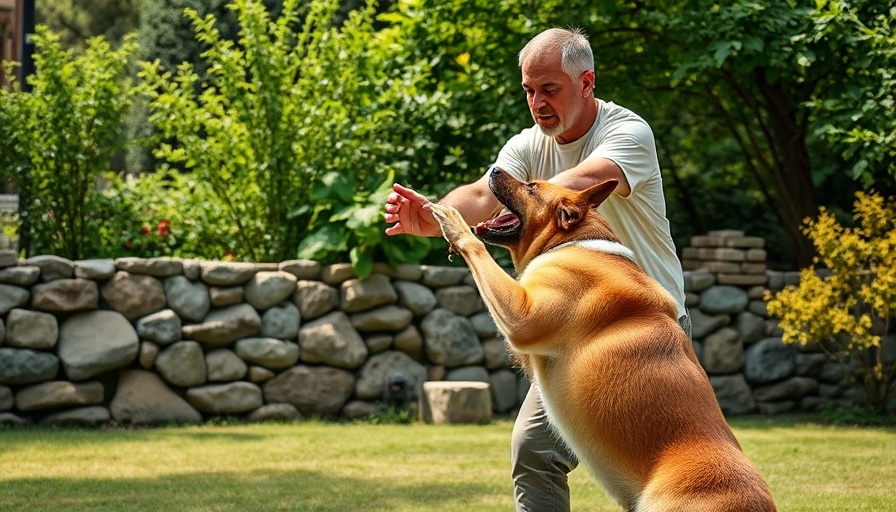
Unlocking the Potential of Free Shaping in Dog Training
If you've ever watched a dog master a new trick effortlessly, you might be curious about how the training process works. One exciting technique is known as free shaping, which allows our furry friends to learn concepts at their own pace. As highlighted in the video Teach Your Dog Anything with Free Shaping!, this method can empower your pet to engage more actively in the learning process while fostering a special bond between you and your canine companion.
In Teach Your Dog Anything with Free Shaping!, the discussion dives into innovative dog training techniques, exploring key insights that sparked deeper analysis on our end.
The Basics of Free Shaping: How It Works
Free shaping involves rewarding a dog for behaviors that get them closer to a desired action, rather than only rewarding after a complete trick is performed. This cultivates a sense of autonomy in pets; they learn to think outside the box, which is not only stimulating but also rewarding for both owner and dog. By using treats or praise as incentives, pet owners can encourage their animals to try different actions, allowing them to discover what behavior gets the reward.
The Emotional Benefits of Shaping Techniques
Training pets, especially when done with fun techniques like free shaping, can significantly enhance the bond you share. As dogs engage and respond, they feel more confident and connected to their human counterparts. This emotional connection can have long-lasting benefits, leading to improved behavior both at home and in public environments. Imagine walking down the street with a well-trained, happy dog—what a delight!
Comparative Training Methods: Why Choose Free Shaping?
Traditional training methods often rely heavily on commands and corrections. While effective, they can sometimes create a divide between pet and owner, causing anxiety in pets. Free shaping contrasts sharply with this, utilizing positive reinforcement to motivate dogs instead. This encourages creative thinking and self-discovery, making learning enjoyable for your four-legged friend. Unlike conventional methods, free shaping promotes a positive experience that can reduce stress for both you and your pet.
Practical Tips to Implement Free Shaping
Starting with free shaping can be simple. Here are a few pointers to get you going:
- Start Small: Pick an easily achievable goal for your dog, like spinning or touching a target. It will help build confidence.
- Use High-Value Treats: Make sure the treats you use are enticing enough to capture your dog’s attention.
- Keep Sessions Short: Dogs can lose focus quickly—keeping sessions under 10 minutes will keep them eager to learn.
Future of Dog Training: Trends You Should Know
The world of pet training is evolving, with an increasing emphasis on kindness and positive reinforcement. Techniques like free shaping are becoming more popular among trainers and pet owners. As people further prioritize mental and emotional well-being for both themselves and their pets, these methods are likely to gain traction, changing the landscape of dog training for years to come. This trend not only reflects a shift towards more humane training practices but also an understanding of how dogs think and learn.
Making a Positive Change in Your Pet’s Life
Incorporating free shaping in your training routine can have a substantial impact on your dog's development, behavior, and happiness. Not only are you teaching them new tricks, but you are also enhancing their cognitive abilities and problem-solving skills. Consider how this technique can contribute to your pet's overall health and well-being. It's an investment in their future, fostering a lifelong bond built on trust and cooperation.
As we dive into the world of pet training, it’s important to remember that each dog is unique, with individual learning styles and temperaments. Embracing techniques like free shaping can lead to fulfilling experiences for both you and your pet. If you're ready to explore more about improving your pet care routine, think about employing a veterinarian for personalized insights or attending training workshops for hands-on experiences.
 Add Row
Add Row  Add
Add 




Write A Comment